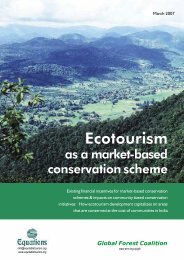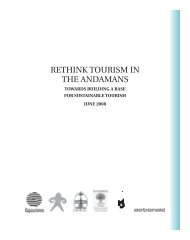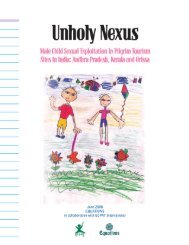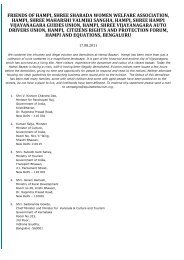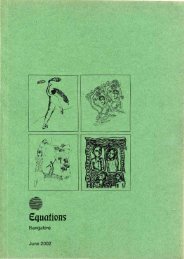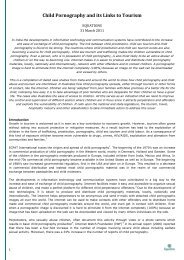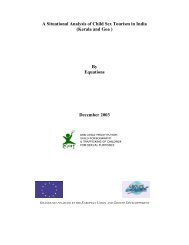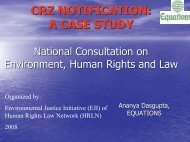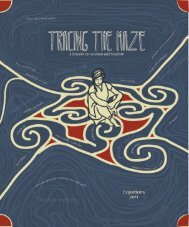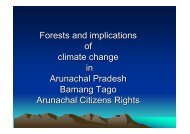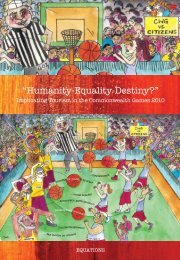Institution of Local Self Governance and its Linkages with Tourism
Institution of Local Self Governance and its Linkages with Tourism
Institution of Local Self Governance and its Linkages with Tourism
Create successful ePaper yourself
Turn your PDF publications into a flip-book with our unique Google optimized e-Paper software.
every state is to open their records to public. The right to information. is getting momentum, where every citizen has the right to information<strong>and</strong> on payment he or she could dem<strong>and</strong> <strong>and</strong> receive details <strong>of</strong> theexpenditure on the work done over the last five years in his or hervillage <strong>and</strong> all the documents could be photocopied as evidence, touse it in future. Ta mil Nadu, Goa, <strong>and</strong> Kerala have already followed it.States like MP <strong>and</strong> U.P. has opened many departments <strong>of</strong>Panchayati Raj to public eye.The new panchayati raj has opened up vistas for better flow <strong>of</strong>information. Information, which was earlier, considered the domain <strong>of</strong>only the dominant classes has percolated to the panchayats, thusbringing in transparency.<strong>Self</strong>-governance for the Scheduled Areas:As per the 2001 census tribal population constitutes about 8. percent <strong>of</strong> the total population <strong>of</strong> India <strong>and</strong> majority <strong>of</strong> them arepositioned in rural areas. Most <strong>of</strong> the tribal societies have their owncustomary laws, their own mode <strong>of</strong> living, organization, traditions,cultural mores, etc. <strong>and</strong> are total cut <strong>of</strong>f from the rest <strong>of</strong> the society.The tribal people have a strong community organization thusfo rmation <strong>of</strong> fo rmal institutions like Panchayats created ananomalous situation. These formal institutions <strong>of</strong>ten came in conflict<strong>with</strong> the tribal customary laws <strong>and</strong> traditions. Whenever these fo rmalinstitutions tried asserting <strong>its</strong> authority, confrontation took place. Theformal institution fa iled to recognize the vibrant tribal communitywhich has been managing <strong>its</strong> affairs in accordance <strong>with</strong> <strong>its</strong> traditionthrough ages, meeting effectively the challenges, which have beencoming in <strong>its</strong> way. The ongoing confrontation between tribal people<strong>and</strong> the formal system was ignored <strong>and</strong> <strong>of</strong>ten treated as law <strong>and</strong>order problem. Thus it was felt to bring a system whereby the tribalcould exercise their freedom <strong>with</strong>out any intervention from outsidefo rces <strong>and</strong> to create a structure, which would be in consonance <strong>with</strong>the traditional system <strong>and</strong> yet encompass the modern elements asenvisaged in various parts <strong>and</strong> Schedules <strong>of</strong> the Constitution.A committee conSisting <strong>of</strong> Members <strong>of</strong> Parliament <strong>and</strong> Experts underthe chairmansip 9f Shri Dilip Singh Bhuria, was created to suggest an., ';"36



